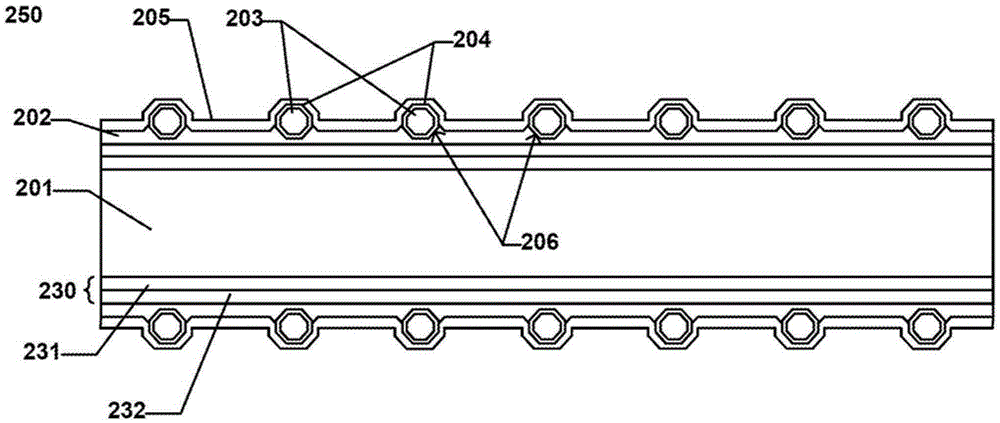Abrasive article and method of forming
A technology for products and abrasive particles, which can be used in grinding machines, abrasives, manufacturing tools, etc., to solve problems such as loss of abrasives in wire saws
- Summary
- Abstract
- Description
- Claims
- Application Information
AI Technical Summary
Problems solved by technology
Method used
Image
Examples
example 1
[0309] Obtain a certain length of high-strength carbon steel wire as the base material. The high strength carbon steel wires have an average diameter of approximately 180 microns. The first layer is formed on the outer surface of the substrate via electroplating. The electroplating process forms a first layer with an average thickness of approximately 3.75 microns. The first layer is formed from a substantially pure tin composition.
[0310] After forming the first layer, a flux material and nickel-coated diamond abrasive particles having an average particle size between 30 and 40 microns are applied over the wire.
[0311] Thereafter, the substrate, The first layer and abrasive particles undergo tin reflow heating (diamond snap). The abrasive preform is then cooled and rinsed. The process of bonding the nickel-coated diamond to the first layer was carried out at an average winding speed of 20 m / min.
[0312] Thereafter, the abrasive preform was washed with 20% by weight...
example 2
[0315] Obtain a certain length of high-strength carbon steel wire as the base material. The high strength carbon steel wires have an average diameter of approximately 180 microns. The first layer is formed on the outer surface of the substrate via electroplating. The electroplating process forms a first layer with an average thickness of approximately 3.75 microns. The first layer is formed from a substantially pure tin composition.
[0316] After forming the first layer, a flux material and nickel-coated diamond abrasive particles having an average particle size between 30 and 40 microns are applied over the wire.
[0317] Thereafter, the substrate, The first layer and abrasive particles undergo tin reflow heating (diamond snap). The abrasive preform is then cooled and rinsed. The process of bonding the nickel-coated diamond to the first layer was carried out at an average winding speed of 20 m / min.
[0318] Thereafter, the abrasive preform was washed with 20% by weight...
PUM
| Property | Measurement | Unit |
|---|---|---|
| length | aaaaa | aaaaa |
| width | aaaaa | aaaaa |
| width | aaaaa | aaaaa |
Abstract
Description
Claims
Application Information
 Login to View More
Login to View More - R&D
- Intellectual Property
- Life Sciences
- Materials
- Tech Scout
- Unparalleled Data Quality
- Higher Quality Content
- 60% Fewer Hallucinations
Browse by: Latest US Patents, China's latest patents, Technical Efficacy Thesaurus, Application Domain, Technology Topic, Popular Technical Reports.
© 2025 PatSnap. All rights reserved.Legal|Privacy policy|Modern Slavery Act Transparency Statement|Sitemap|About US| Contact US: help@patsnap.com



